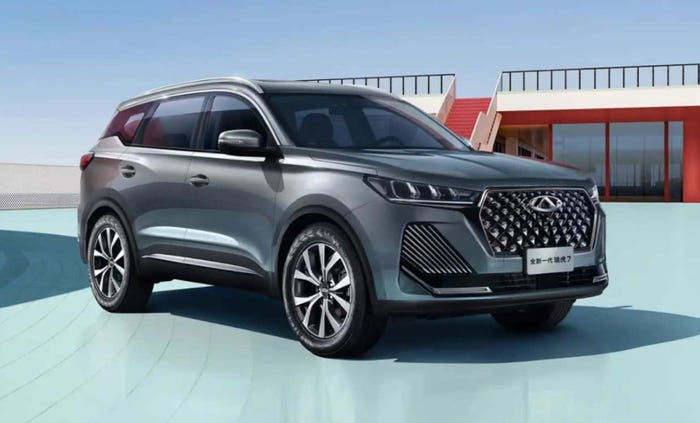GM Reshuffle Reflects Thai Auto Industry’s Struggles
Despite its prolonged sales slump, industry analyst Jessada Thongpak says Thailand will remain ASEAN’s largest automotive hub because its technology and capability to meet global standards is years ahead of second-ranked Indonesia’s.

General Motors’ decision to stop production in Indonesia and quit Thailand’s eco-car program has shocked many in the industry.
The English-language Bangkok Post says industry observers are asking how GM can afford to back away from two of the world��’s most lucrative markets.
But while GM is changing its Indonesian operation from manufacturing to a purely sales company, as it is doing in neighboring Australia, it hasn’t fully backed away from the Pacific archipelago nation.
Its China-based SGMW joint venture with SAIC Motor and Wuling Motors plans a $700 million plant to assemble Wuling vehicles in Jakarta.
High operating costs, sluggish sales and market rejection of the Spin small MPV, saw GM lose about $200 million in Indonesia in 2013 and 2014 after spending $150 million to reopen the plant it established a decade earlier.
“One of the key issues is that GM could not fully localize parts and components where some parts were imported, resulting in uncompetitive prices,” IHS Automotive senior analyst Jessada Thongpak says.
Thailand-based consultancy LMC Automotive says GM restarted its Indonesian plant in 2013 with annual capacity of 40,000 units but sales were below 10,000.
“The sales didn’t grow as expected while the operating cost was very high, making the company unable to compete with Japanese rivals,” director May Arthapan says.
Jessada agrees, telling the Post the Association of Southeast Asian Nations market has long been strongly connected to Japanese brands with companies such as Toyota having built cars in Thailand or Indonesia for more than half a century.
“Japanese automakers have dominated the market with nearly an 85% share in all segments,” he says. “ASEAN consumers rely heavily on Japanese product quality and technology, not only (in) cars but also electronic devices and home appliances.”
Jeeranut Sangdee, communications director-GM and Chevrolet Sales Thailand, tells the newspaper stopping Chevrolet Sonic production at the Rayong plant in Thailand and withdrawing from the government’s eco-car program will help the company in the long run.
“Our decision to withdraw from the Thai eco-car program is part of regional positioning strategy to adjust the portfolio, narrow the product line and focus more on our core strength, which are pickup trucks and SUVs, not eco-cars,” she says.
Pickup trucks represent 40% of the total auto market in ASEAN, she says, and by using its full potential GM will benefit fully from continuing market growth.
The GM repositioning comes as the Thai industry is laying off temporary workers and cutting output because of weak domestic demand.
Piengjai Kaewsuwan, chairwoman of the ASEAN Automotive Federation, says the downturn has lasted longer than expected with no recovery in sight.
“Last year, for instance, domestic sales (industrywide) slipped below 900,000 units, compared to the original forecast of 1.1 million,” says Piengjai, vice president-government affairs at Nissan Thailand. “Every automaker has to adjust to cope with the current unfavorable environment.”
Ipsos Business Consulting tells the Post a key reason the Thai auto industry has failed to recover this year is the high level of household debt.
It sees household debt continuing to grow over the next three years to reach 89% of GDP because of low interest rates, easy access to loans from mainstream commercial banks, exacerbated by illegal loans, and a culture of borrowing in Thailand.
For the mainstream industry, exports were little changed at 1.2 million units last year and Federation of Thai Industries data shows production fell 23.5% to 1.88 million units, well below the target of 2.1 million.
FTI Automotive Industry Club chairman Suparat Sirisuwannangkura says some companies are starting to let go of staff whose contracts expire, but he believes they will return once demand picks up.
Suparat , also a senior vice president at Toyota Thailand, says while all Japanese automakers remain committed to the second phase of the eco-car program, prospective newcomers may take a cue from GM and stay out.
But the newspaper says Thailand will remain the largest automotive hub in ASEAN despite the long sales slump with IHS analyst Jessada saying it will take many years for second-ranked Indonesia to develop its technology, infrastructure and capability to meet global standards.
“Production in Thailand is aimed at both domestic consumption and exports,” Jessada says. “The product portfolio here is much greater than that in Indonesia where more than 85% of the market is dominated by MPVs and (eco-cars).”
Jessada says Thailand also will remain ASEAN’s major hub because “It will be extremely costly for automakers in Thailand to move elsewhere.”
Car penetration in Thailand was 186 in 1,000 people last year, compared with 336 in Malaysia, 52 in Indonesia, 33 in the Philippines and 15 in Vietnam. LMC Automotive says by 2021, the ratio will reach 258 in Thailand, 371 in Malaysia, 77 in Indonesia, 41 in the Philippines and 25 in Vietnam.
About the Author
You May Also Like



